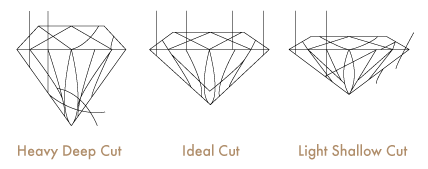In addition to superior fire, brilliance and scintillation of the Soleil diamond, we carefully consider the four traditional characteristics of the diamond – colour, carat, clarity and cut.
Colour.
Bright and white.
When it comes to diamonds, the less colour in the stone the more valuable it is. White diamonds range in colour from ‘colourless’ through to ‘lightly coloured’, with colour referring to the presence of yellowness in the stone. The less yellow in the stone, the higher the value.
Clarity.
Naturally beautiful.
Clarity refers to the presence and visibility of any natural characteristics within the diamond itself. A completely flawless diamond is extremely rare and this rarity is reflected the price. Untreated, natural diamonds will nearly always have some kind of inclusion, and its clarity depends on how easily those inclusions can be seen at 10 times magnification. While less natural inclusions create a more valuable stone, the value of a Soleil diamond is derived from the promise it represents between the giver and wearer.
We believe beauty is in the eye of the beholder.
Carat.
Weight not size.
Carat is understood by most as the size of the diamond, but actually refers to the stone’s weight. Two diamonds of the same weight do not necessarily have the same value, with other factors playing a determinative role in value.
Cut.
Not just shape.
Cut refers to a diamond shape whether a traditional round or the classic princess through to the delicate marquise. The cut of a Soleil Diamond directly impacts upon its superior sparkle. The preciseness of the cutting determines how light performs within the stone.
A stone’s brilliance refers to the refraction of light from the top of the stone down to the facets on the underside. A diamond’s fire refers to the way in which light bends through the stone to create a myriad of colours as it moves. Its scintillation is a measure of its sparkle. The precision cutting of each facet means that a Soleil Diamond appears to emit a light source of its own.







